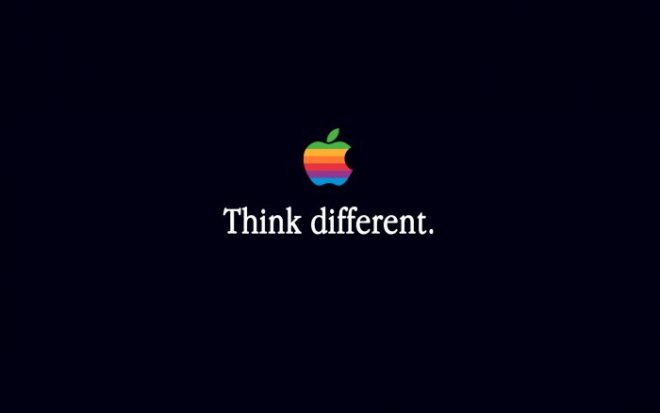
The only way you can grab your audience’s attention is by having a captivating visual for your content which may or may not be dry and boring.
Now you must be wondering why you need to have a good visual presence, along with how, when and what. Well all those questions are going to be answered, courtesy of Rebekah Radice.
Here’s how you can develop your unique visual calling card.
6 Ingredients to a Strong Visual Brand on Social Media
1. Unique, Memorable, Undeniably YOU
Imagine sitting down in front of your computer, watching a sequence of images at a rapid pace.
You might think it would be impossible to identify, capture or retain any of that information. Amazingly though – a lot can happen in the blink of an eye.
In fact, our brains are such a powerful processing tool that they can process images in as little as 13 milliseconds.
Think about that as it relates to your brand, your website, your entire online presence.
In a matter of moments, your audience is making a decision. Will they stop and read or will they move on?
Do they decide to engage with your business or interact with your competition?
Given the speed that people scan content, having a knock ‘em dead online presence is critical. Without it, you may lose an opportunity forever.
That’s where visual marketing comes in.
The right graphic can share your vision, expand the life of a product, sell a service or boost a campaign.
And the beauty in this…
Every company has this unique opportunity.
It’s that split second moment where you can inspire and delight your audience.
But to do it, you need to start with a powerful brand image.
What does a strong visual brand on social media look like?
When you think of a strong visual brand identity, what comes to mind?
In most cases, the logo is the first thing you think of. From the website to offline marketing, a logo is an extension of that brand.
But it’s more than that…
According to a recent study, 45% of a brand’s image comes from what they say and how they say it.
Your words tie together the mission, vision and values.
How you say it gives voice to the company message. It’s that message that creates the brand experience.
It influences how people feel; their emotion, attitude and opinions around that brand.
It’s also the vibrant, eye-catching and appealing way they leverage visual marketing.
Just take a look at many of the most iconic brands out there.
Each one has an instantly recognizable logo. They’ve also succeeded in creating massive appeal through strong visual content.
Coca-Cola, one of the most well-established brands around, has an undeniable look and feel.

In fact, it’s said that “Coca-Cola” is one of the most recognizable terms worldwide.
What’s more:
From Instagram to Facebook, they’ve leveraged that brand.
Proving that a strong visual presence is key to continued domination.
So what makes them stand out? They’re…
- Unique
- Versatile
- Predictive
- Responsible
- Memorable
- Adaptable
- Confident
How can you create a strong visual brand?
- Streamlined look and feel – Just look at Target as a prime example of a brand that’s consistent from online to offline marketing.
- Tone of voice – Whether your tone is bold, vibrant, playful, clever, cool, fun, genuine, empathetic, or authentic, it needs to humanize your brand, create a bond between you and your audience, and define your personality.
- Clear aligned message – Know your brand and have a clear image of your company’s personality, mood, and history.
- Tell a story – 92% of consumers say they want brands to create content that tell a story. However, every brand has its own story, so it’s up to you to create yours.
- Be a trust magnet – 60% of consumers say they’ll only buy from a familiar brand. At the same time, 54% of people DON’T trust brands. Yikes…
2. Design an Experience, Don’t Just Sell a Product or Service
Are you posting visual content just for the sake of it?
Or worse yet…
Does your visual marketing only promote your business?
If you want to create a community eager to eat up your visual content, stop making it all about YOU.
Instead:
Let your visual marketing sell more than your business, product or service.
Design an experience around your business and brand.
Remember, a good brand is built over time and that requires thought, strategy and consistent implementation.
What does this look like in action?
Nobody knows how to create an experience better than the Ritz Carlton.
They’ve turned customer care into an art form. And they’ve extended that across all of their online properties.
How are you using visual marketing to create a valuable experience for your audience?
With 63% of all social media content including an image, it’s time to increase your odds of winning that moment.
After all, your customers crave visual content, so why not give it to them?
What type of visual content works best across social media?
- Quotes
- Data (Infographics, statistics)
- Ebooks
- Video (hot, hot, hot!)
- Gifs/Memes
- Behind the Scenes (a look into your business)
- Tips and How-To’s
- Questions
No matter how you’re using visual marketing, make sure it’s hitting the mark.
If quotes aren’t working with your audience, adjust your strategy.
There is no one-size fits all solution. Find your visual groove and work it.
3. Give Your Visuals a Plan, Purpose and Promise
Before you can use visual marketing, you need to know what you want to get out of it.
How will you communicate your brand image to the world?
Once you know that, it’s time to determine how you will visually and creatively express your brand promise.
For example, Apple’s promise to… “think different” is two-sided.
It’s their guarantee to create products based on seeing the world a little differently.
It’s also their promise to inspire their customers to do the same.

Find your identity:
Think about how people perceive your business.
Now consider Red Bull.
They have a well established voice and share engaging and contagious content.
But they do more than that…
Red Bull knows how to create an experience with visual content.
They’re using it to build trust long before they ask for the sale.
To develop your visual marketing plan, take these two steps.
A. Planning Ahead: Where do you want to be?
Examples:
- Global industry leader through a clear, measurable and achievable company marketing strategy
- Dominant player in market through word of mouth marketing, influencer marketing, integrated marketing plan and defined customer acquisition campaigns
- WOW factor established – plays significant role in customer retention and satisfaction
- Inbound marketing model is 100% in alignment with company goals and strategies
- Team trained to nurture leads through established customer journey – speak to a clearly defined customer persona
Now determine how you translate that through your visual designs. How can the right graphic position your business in the best possible light?
B. Identify how you will create a brand connection through your visuals.
Examples:
- Produce visual marketing that surprises, delights and educates the audience
- Use visuals to tap into the head and heart of the audience. Understand their physical, emotional, and rational needs.
- Know why your customers buy. Is it to:
- Satisfy a basic need?
- Solve a problem?
- Better themselves?
Once you know those answers, you can cater to your customers’ exact needs.
Don’t throw visuals out, hoping they make a connection. Use them to provide real value.
Make your social media audience feel safe, confident and comfortable.
4. Inspire Action: Be Consistently Consistent
What’s the difference between a memorable brand and one that’s forgotten?
Consistency.
After all…
A consistent brand builds trust.
But consistency doesn’t mean cookie cutter.
It also doesn’t mean doing the same thing across every social channel.
Facebook, Instagram, Twitter – all unique audiences.
So why are you treating them as if they’re the same?
Each one needs to visually stand out on its own.
Don’t be afraid to tailor your content per channel.
Be careful to only change characteristics based on the channel.
Your brand elements should remain consistent.
How can you create consistency across social media? With your…
- Name
- Communication
- Style
- Logo
- Color scheme
- Tagline
- Watermark
- Graphic elements

5. Choose Your Best Color Palette
Did you know…
Color impression accounts for 60% of the acceptance or rejection of your product or service?
That’s HUGE!
Choose a dominant color that mixes your message, voice, and identity.
Think about what it represents: energy, vitality, creativity?
Remember that color can send a powerful message about your brand, so make sure it’s only strengthening your brand’s image.
The Psychology Behind Brand Colors
- Black conveys a message of power and authority. It speaks to a stylish and timeless message, imparting a sleek, formal, luxurious or classic experience.
- Yellow is seen as fun, joyous and optimistic. Brands like Nikon, Subway and Best Buy bear the brand of a bold, deep yellow.
- Orange is my brand color and one that embraces every aspect of my business. It’s cheerful, inviting, encouraging, friendly and confident. Orange makes me happy!
- Red is a color that is emotionally intense. When we see red we think of “strength, adventure, energy and love.” It is extreme, exciting and vivacious with Coca Cola, Virgin and Pinterest embracing this vibrant hue.
- Blue makes us think of tranquility. It promotes a feeling of calm, and can symbolize loyalty. When we think about blue, we think of the words “unique, trust, reliable or clear.” Brands prominently displaying blue within their logo are Facebook, Dell, HP and Oreo.
- Green causes people to think about nature. It’s calming and refreshing. Green symbolizes balance, growth, and freshness and can also speak to financial stability as green is the color of money.

6. Tell Your Story
92% of consumers say they want brands to create content that tells a story.
What’s yours?
Just keep in mind…
As you craft your story and prepare your visuals for each social network:
Writing and creating content for the ear isn’t the same as creating it for the eye.






